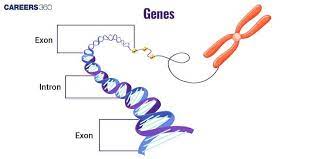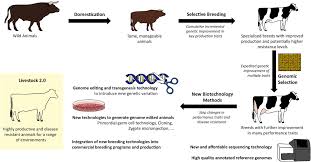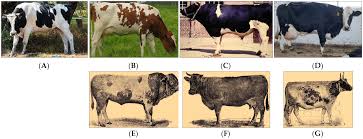Genes hold the information to build and maintain an organism’s cells and pass genetic traits to offspring. However, some genes are incompatible with life and could be detrimental to the organism that carries them.
Different alleles can exert different phenotypic effects; some effects are easily observed, while others may remain hidden and only express themselves phenotypically under favorable conditions. In this article, the various types of genes and their expression will be considered.
Read Also: Various Types Of Fruits And Their Nutritional Value
What is a Gene?

A gene is a unit of heredity in a living organism. Genes hold the information to build and maintain an organism’s cells and pass genetic traits to offspring. These genes are located on chromosomes, which are found in the nucleus of the cell.
The specific region of the chromosome where a particular gene is located is called a locus. Genes are composed of a chemical substance known as Deoxyribonucleic Acid (DNA).
The number of DNA molecules is equal to the number of chromosomes in a cell. In humans, body cells have 46 chromosomes, known as the diploid condition (2n), while gametes have 23 chromosomes, known as the haploid condition (n). A chromosome consists of a single, very long DNA helix on which thousands of genes are encoded.
Types of Gene Expression in Farm Animals
1. Lethal or Detrimental Genes
Gene changes that are incompatible with development or survival are known as lethal genes. In other words, genes that result in the death of an individual at any stage of development are called lethal genes.
This could occur immediately following fertilization, during embryonic differentiation, at birth, or postnatally. Lethal genes may be dominant, exerting their effect in heterozygotes, although such cases are rare and difficult to study since they are quickly eliminated from the population unless they act later in life after the affected individual has already produced offspring.
Some genes are deleterious to the organism but are not lethal, meaning they do not cause death as long as environmental conditions remain favorable. However, they can cause deformities at any stage of life and are known as semi-lethal genes.
Control of Lethal or Detrimental Genes in Livestock

The actions taken when lethal or detrimental genes are discovered in a herd depend on the type of herd and the severity of the abnormality. In a commercial herd, it is usually necessary to cull the sire or sires that produced the defective offspring and replace them with unrelated males.
For seed stock herds, corrective measures need to be more drastic, as the obligation is to provide high-performing breeding stock for future generations.
Possible measures for eliminating or reducing the frequency of lethal or detrimental genes in a herd include:
- Cull all sires that have produced defective offspring.
- Remove all females that have produced defective offspring from the seed stock herd.
- Cull other close relatives of affected individuals, including normal offspring of sires and dams that have produced defective individuals.
- If affected individuals are viable and fertile, retain them for progeny testing of prospective breeding animals.
- Progeny-test all prospective herd sires before using them extensively in the herd.
Dominant and Recessive Genes in Animal Breeding
Dominant genes exhibit observable effects when present in either the homozygous or heterozygous state. The degree of dominance can vary widely. In some cases, dominance is complete, meaning the outward effect is the same whether the dominant gene is present in one or both copies of the chromosome pair.
In other cases, dominance is incomplete, showing an intermediate expression. Recessive genes, on the other hand, do not have an apparent effect unless present in both copies of a chromosome pair.
To determine the genotype of an unknown individual, two types of crosses are commonly used:
1. Test Cross: The crossing of an individual with an unknown genotype to a completely recessive individual. The type of progeny will depend on the types and frequencies of gametes produced by the parent of unknown genotype.
2. Back Cross: The crossing of a progeny with one of its parents.
Read Also: Cultivation Methods For Different Fruit Trees And Bushes
Additive Genes in Livestock Breeding

Additive genes, also known as polymeric genes, involve multiple gene pairs determining a single characteristic. For example, in Cucurbita pepo plants, crossing two plants with spherical fruits yielded only discoid-fruited progeny (F1).
When F1 progeny were crossed, discoid, spherical, and long-fruited progeny were produced. This shows that in F1, the progeny do not resemble either parent, and in F2, a third phenotype appears. A similar inheritance pattern is observed in pigs, particularly in coat color.
Complementary Genes in Animal Genetics
Complementary genes are dominant alleles located at two different loci that segregate independently but work together to produce a complementary phenotypic effect. Their presence results in specific observable traits that would not be expressed if only one of the genes was present.
Penetrance in Genetic Expression
Penetrance refers to the frequency with which a gene produces a visible phenotypic effect in individuals carrying it. In other words, penetrance is the proportion of individuals that exhibit the expected phenotypic effect of a specific gene. If a gene is present in an appropriate genotype but does not always manifest its expected phenotype, it is considered to have incomplete penetrance.
Expressivity in Genetic Traits
Expressivity refers to the degree of phenotypic expression of a penetrant gene. It describes the ability of a gene to produce identical phenotypes in all individuals carrying it in the appropriate genotype. Some genes may have variable expressivity, meaning they do not always produce the same level of trait expression in all individuals.
A strong understanding of genes and their various types, as well as their effects on phenotypic variations, is essential for effective breeding programs. Genetic selection techniques should be based on this knowledge to improve desirable traits in livestock.
Genes act as the fundamental units of heredity, holding the instructions for maintaining an organism’s cells and transmitting genetic traits to offspring.
Some genes can be lethal at any stage of development, while others may be detrimental but not fatal under favorable environmental conditions. Proper management strategies, including genetic testing and selective breeding, help in mitigating the effects of harmful genes in agricultural livestock production.
Do you have any questions, suggestions, or contributions? If so, please feel free to use the comment box below to share your thoughts. We also encourage you to kindly share this information with others who might benefit from it. Since we can’t reach everyone at once, we truly appreciate your help in spreading the word. Thank you so much for your support and for sharing!

